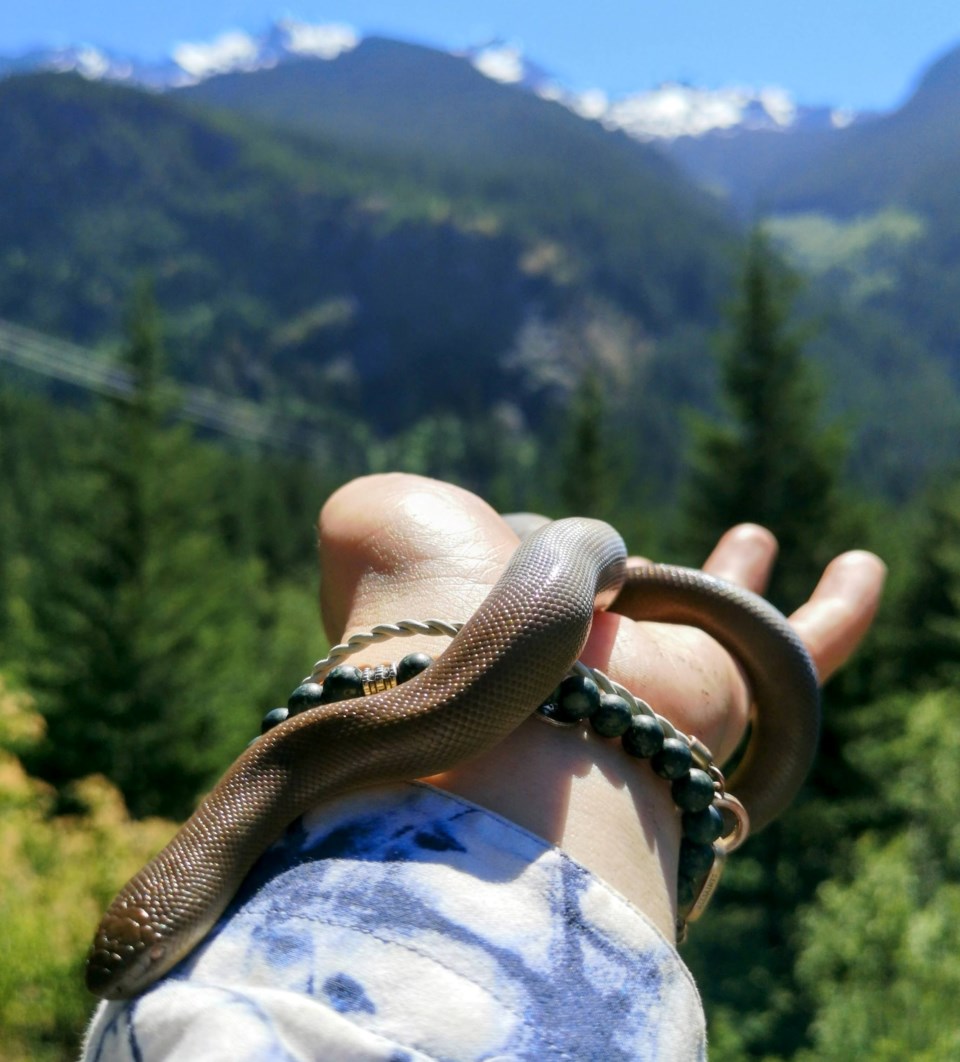This summer, my work in local wildlife conservation efforts has embraced an unlikely pairing.
Over the past year I’ve had the privilege of working with the Coast to Cascades Grizzly Bear Initiative, focusing on the protection and recovery of threatened grizzly populations in Southwest B.C. Often thought of as fierce carnivores, or “apex predators,” grizzlies here predominantly rely on a diet of local plant life. As an umbrella species, their presence signals healthy ecosystems. Grizzlies are meant to inhabit these landscapes, and having grown up in the Pemberton Meadows, I have a profound appreciation for the value of coexistence. However, thanks to my work with Veronica Woodruff at Pemberton-based Clear Course, my interests have taken a surprising turn toward another facet of local biodiversity—the fascinating world of herpetology.
If you asked me two months ago what herpetology was, I wouldn’t have been able to tell you. I know what you’re thinking: “herpe-what”? Herpetology is the study of amphibians and reptiles—creatures like salamanders, frogs, toads, snakes, lizards and turtles. Astoundingly, Whistler and Pemberton are home to quite an array of these species!
Spending time in the field with the knowledgeable herpetologist Dr. Leslie Anthony, I’ve unearthed (literally, in some cases) a whole new-to-me mysterious kingdom. Though rarely intersecting, these two realms of local biodiversity have enriched my understanding of the natural world. My life is now consumed by both grizzly bears and snakes—and I have no complaints. Despite their differences in size and nature, both grizzlies and snakes are crucial for regional ecological balance and biodiversity, and deserve protection.
Did you know Pemberton is home to the rarest snake in Canada? The sharp-tailed snake, Contia tenuis, intrigues researchers because of its puzzling distribution and secretive nature. Anthony was shocked and thrilled to find this small, cryptic species in Pemberton during the 2011 Whistler BioBlitz, given that the closest-known populations were more than 200 kilometres away on the Gulf Islands and Victoria area. Why is this species also found in Pemberton—and where else might it be hiding?
Since then, working with the Lil’wat Nation and supporting organizations, Anthony and Woodruff have aimed to answer the question of sharp-tailed snake distribution in the Pemberton area using Artificial Cover Objects (ACOs)—a.k.a. asphalt roofing tiles—for surveying and monitoring. Snakes rely on external heat sources to regulate body temperature. Because the tiles warm quickly under the sun, they offer an ideal sub-surface basking spot. To date, we’ve strategically placed 114 ACOs that are checked periodically throughout spring, summer and fall. Sharp-tailed snakes have been detected at about a dozen sites since 2011, along with northern rubber boas, alligator lizards, and three species of gartersnakes that call Pemberton home.
In addition to being rare, the sharp-tailed snake is an endangered species. It’s crucial to understand and protect its habitat, much of which is already heavily threatened by residential and recreational developments, which also impact grizzly bears. If you happen to encounter any species of snake, lizard, frog, toad or salamander in the Pemberton area (including Whistler) take a photo and upload your observation to iNaturalist. To automatically collate all data on regional herpetology, we’ve created a special project on this global citizen-science platform called RAPSA: Reptiles and Amphibians of Pemberton and Surrounding Areas. Help us understand these amazing smaller critters we share our home with!
Naturespeak is prepared by the Whistler Naturalists. To learn more about Whistler’s natural world, go to whistlernaturalists.ca.




